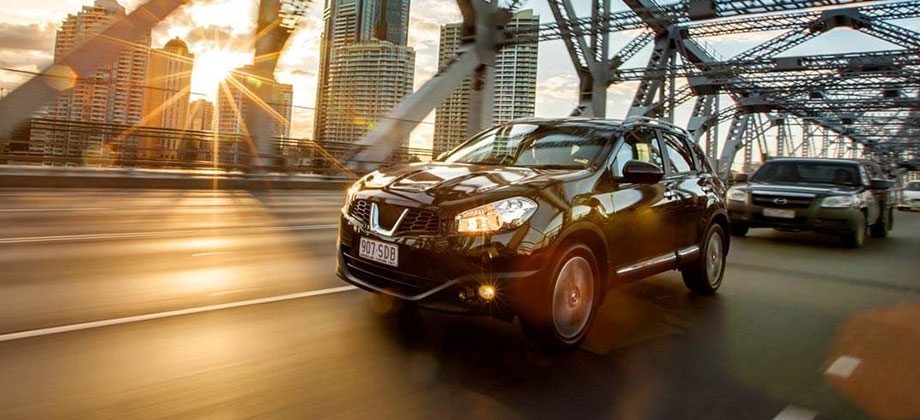Young and novice drivers
The over-representation of young drivers in road crash fatality and injury statistics is an international issue with high social and economic costs (OECD 2006, p6).
For OECD countries (Australia is a member of OECD) traffic crashes have been the single biggest killer of 15-24 year olds (OECD 2006, p13).
Young drivers typically represent between 9 and 13% of the population, but between 18 and 30% of all killed drivers (OECD 2006, p13).
Queensland’s statistics relating to young adults (aged 17-24 years) are similar. During 2010 there were 63 fatalities as a result of crashes involving young adult (17-24 year old) drivers or riders in Queensland, representing 25.4% of the road toll for that year (Department of Transport and Main Roads 2011). Of the 63 fatalities, 38 were the young drivers or riders themselves (Department of Transport and Main Roads 2011), representing 15.26% of Queensland’s total 2010 road crash fatalities.
RACQ estimates (using Australian Bureau of Statistics Data) that Queenslanders aged 17-24 represented around 11.3% of the State’s population at the end of 2010.
Young adult drivers and riders are still over-represented road crash fatalities in Queensland compared to their proportion of the population, but Queensland has been working to address these statistics.
It is believed that lack of experience, risk-taking tendencies, driving at high-risk times and a number of potential distractions (e.g., peer passengers) all contribute to the elevated crash risk for young novice drivers (Australian Transport Council 2008, p46). However, of these factors, inexperience is believed to be the primary cause of the young novice driver problem (OECD 2006, p83).
It takes time and practice for drivers (younger and older) to gain competence in driving (OECD 2006, p83).
In July 2007 Queensland introduced a requirement for learners under 25 years of age to gain a minimum 100 hours of certified, logbook-recorded supervised on-road driving experience, including 10 hours of night driving (Queensland Transport 2008, p18).
The RACQ had long held the view that there was a need for learner drivers to gain extensive practical experience before being eligible for a provisional licence. The introduction of the logbook and 100 hours requirement is seen as an important advocacy victory.
By counting each hour spent with a professional driver trainer as three hours in their logbook (up to a maximum of 10 hours or 30 hours in the logbook), learners are encouraged to gain professional training.
The Club also believes that the other changes made to Queensland’s graduated driver licensing system in July 2007 broadly assist in preparing learner drivers to drive solo and protecting them once they obtain provisional licences.
Advice for motorists
To help avoid being involved in crashes, young drivers should:
- Get as much supervised on-road experience as possible, in a variety of road, traffic and weather conditions during the learner stage. The minimum 100 hours is good, but more is better.
- Avoid taking risks e.g., driving fast to impress peers.
- Restrict driving under high-risk conditions, e.g., at night on weekends, with passengers and after drinking alcohol or using drugs.
-
- Ensure learner drivers gain extensive practical experience before being eligible for a provisional licence and that learner drivers have access to professional driver trainers to assist them in gaining skills and experience.
- Increase public education about the benefits of extensive supervised experience prior to solo driving and limiting the amount of unsupervised driving young drivers are involved in under higher-risk conditions, e.g., late night, with peers, after drinking alcohol.
- Encourage parents to help provide a structured approach to learning to drive to suitably prepare learner drivers before they obtain a provisional licence and drive unsupervised.
- Improve communication and information sharing between researchers, driver trainers, parents and novice drivers so education material and lesson content is understood and reflects good practice.
- Research and develop methods to more effectively communicate road safety messages to young people.
- Evaluate the young driver initiatives implemented in Queensland to date and make necessary adjustments to help improve the system, focusing on crash reduction.
-
Australian Bureau of Statistics 2012, 3101.0 – Australian Demographic Statistics, Dec 2011, Web Document, Accessed 26/06/12 from: http://www.abs.gov.au/AUSSTATS/abs@.nsf/Lookup/3101.0Main+Features1Dec%202011?OpenDocument
Department of Transport and Main Roads 2011, 2010 Year In Review Road Crash Report, Queensland Government, Accessed 23/05/12 from: http://www.tmr.qld.gov.au
Organisation for Economic Co-operation and Development (OECD) 2006, Young Drivers: The Road to Safety, OECD Publishing, Paris, France.
Queensland Transport 2007, New licensing laws for young drivers in Queensland, Queensland Government, Brisbane, Queensland, Australia.
Queensland Transport 2008, Queensland Road Safety Action Plan 2008-2009: safe4life, Queensland Government, Brisbane, Queensland, Australia. Safer Road Users: Alcohol
